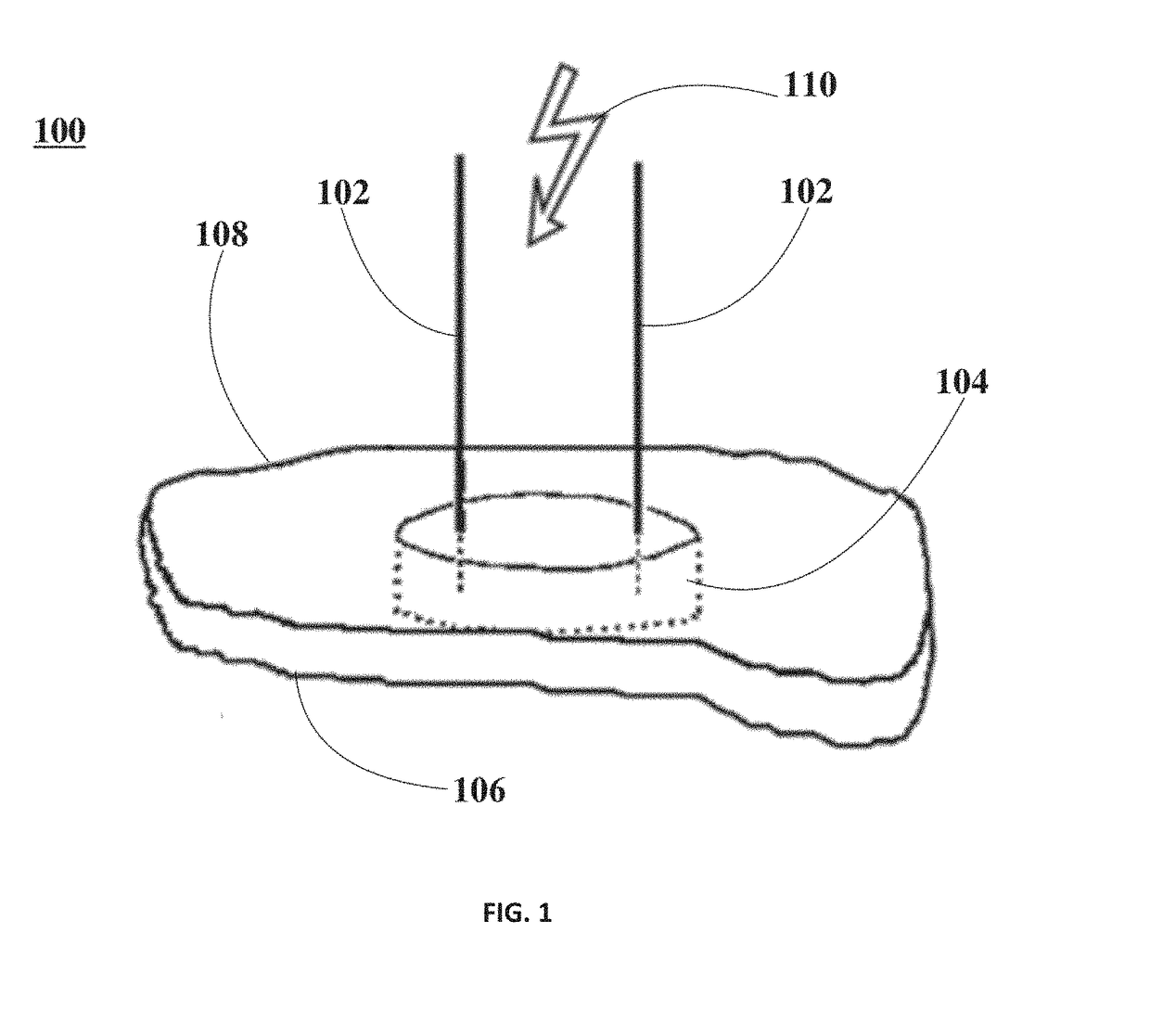Ablation of Myocardial Tissues with Nanosecond Pulsed Electric Fields
a nano-second pulsed electric field and tissue technology, applied in the field of biological tissue ablation, can solve the problems of reducing the quality of life of most patients, forming blood clots, and only satisfying pharmacological treatments, so as to reduce the thermal side effects of rf ablation, reduce the control of the ablated volume, and prolong the ablation time
- Summary
- Abstract
- Description
- Claims
- Application Information
AI Technical Summary
Benefits of technology
Problems solved by technology
Method used
Image
Examples
examples
[0103]The following examples and results are presented solely for illustrating the various embodiments in the present disclosure and are not intended to limit the various embodiments in any way.
[0104]For these examples, four New Zealand rabbit hearts were isolated and placed in a Langendorff setup. Then, optical mapping was used to establish a control activation map during myocardial surface stimulation. Two shock electrodes were repeatedly inserted, spaced 25 mm apart, into the left ventricle through the entire wall. For the mapping of the heart about 50 pulses at about 1 Hz each were applied to electrodes using an intensity of about 0.52 kV / mm for about 300 ns. Additionally, propidium iodide stains were used to characterize the geometry of the ablated volume.
[0105]FIG. 8 includes photographic representations depicting a pulse application using a penetrating electrode configuration for ablation of myocardial tissue and incorporating nsPEFs, according to various embodiments.
[0106]FI...
PUM
 Login to View More
Login to View More Abstract
Description
Claims
Application Information
 Login to View More
Login to View More - R&D
- Intellectual Property
- Life Sciences
- Materials
- Tech Scout
- Unparalleled Data Quality
- Higher Quality Content
- 60% Fewer Hallucinations
Browse by: Latest US Patents, China's latest patents, Technical Efficacy Thesaurus, Application Domain, Technology Topic, Popular Technical Reports.
© 2025 PatSnap. All rights reserved.Legal|Privacy policy|Modern Slavery Act Transparency Statement|Sitemap|About US| Contact US: help@patsnap.com



